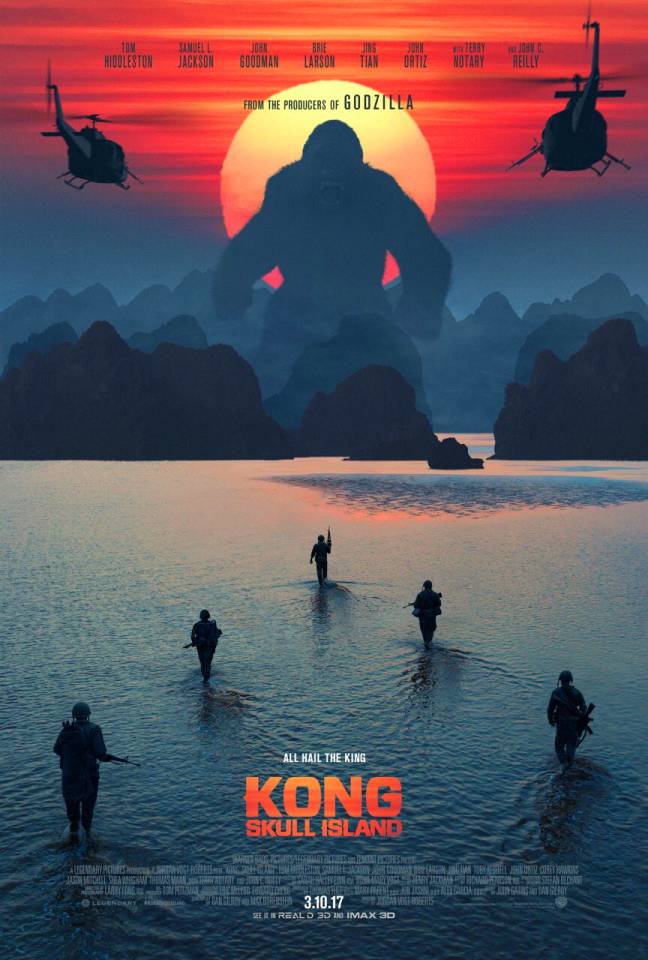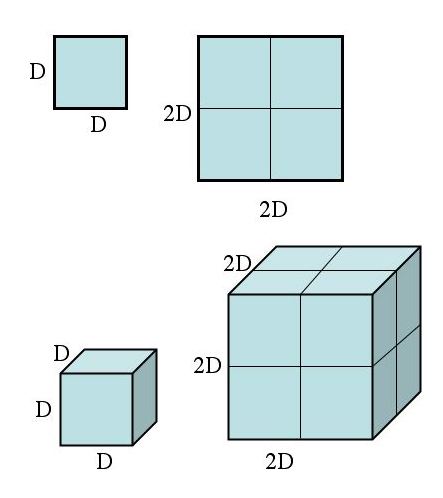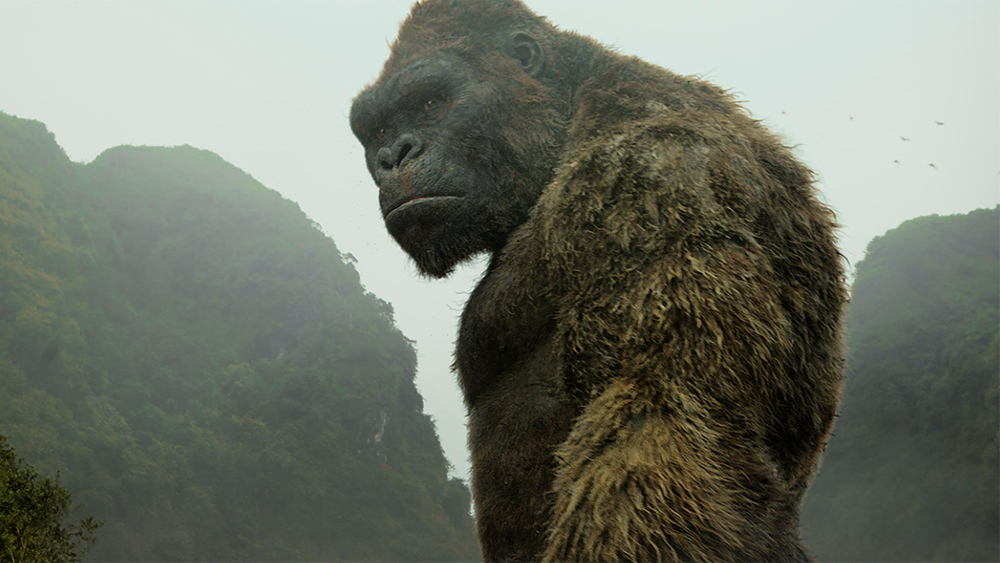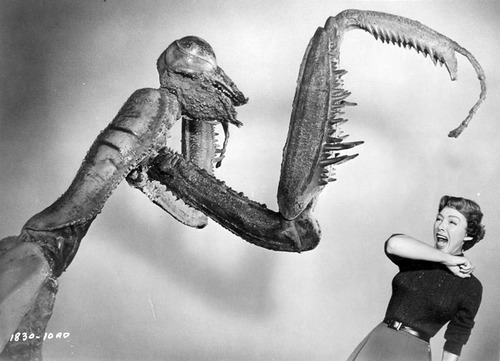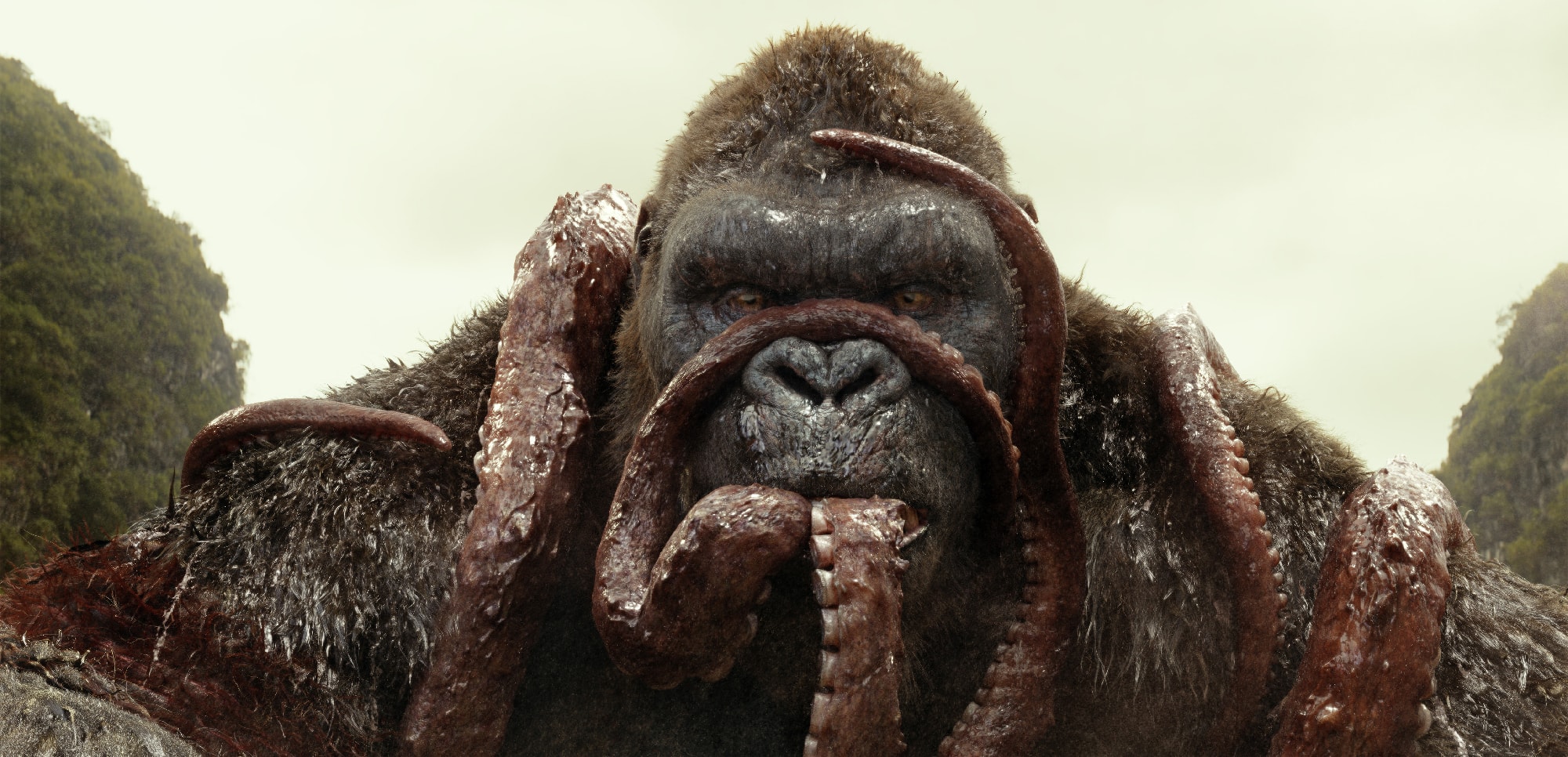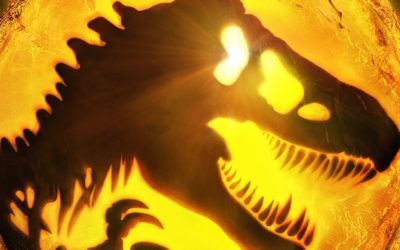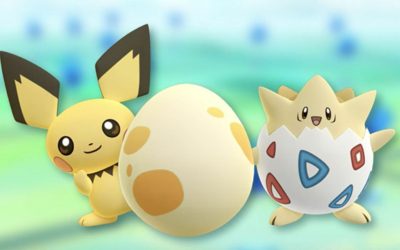Hey – Kong: Skull Island is out on digital. Let’s talk about giant monsters.
Okay, first things first – this is a movie. It’s not real. The film’s publicity site implies as much – Kong is not an ape in the same terms of “apes” as we know them. We’re not trying to kill the fun here. It’s a terrific movie with amazing effects.
But let’s get into the science of things like Kong and why they’re not in our world.
He’s a Big Boy
For Kong: Skull Island, the producers made the decision to make the great ape bigger than he’s ever been before – an unapologetic 100 feet tall. That’s some major growth over the years. In his first outing in 1933, Kong was only 18 feet tall in the Skull Island scenes, and rescaled to be 24 feet tall in the New York scenes. In the 1976 remake, he was around 55 feet, and in the 2005 remake, Kong was envisioned to be more of a “realistic” gorilla and brought down to 25 feet.
100 feet is a growth spurt of epic proportions, and rumored to have been brought about by the need to bulk Kong up for an upcoming cinematic fight against Godzilla, who’s coming in at 355 feet.
But – we don’t have Kongs or Godzillas (or any of the creatures in the upcoming adaptation of Rampage, either) running around. Why not?
Kong (and everyone’s) size comes down to a simple law, attributed to Galileo Galilei, and it goes like this:
When an object undergoes a proportional increase in size, its new surface area is proportional to the square of the multiplier and its new volume is proportional to the cube of the multiplier.
Mathematically, its two parts look like this:
A2 = A1 (l2/l1)2
Where l1 is the original length, l2 is the new length, A1 is the original surface area, and A2 is the new surface area, and
V2 = V1 (l2/l1)3
Where V1 is the original volume, and V2 is the new volume.
That’s also called the square-cube law.
Think of it like this – or do this. Cut out a square of paper, with each side being two inches. The area of the square is length x width, or 2 x 2 = 4 in2. Simple stuff, right?
Now, double the sides of your square so they’re 4 inches instead of 2. The area of the square? 4 x 4 = 16 in2. You doubled the length of the sides (2 inches to 4 inches), but your surface area increased by a factor of four (4 in2 to 16 in2), or in other words, the new surface area is proportional to the square of the multiplier. Your multiplier was 2 (doubling the length), so the new surface area went up by the square of 2, 4. The original area was 4 in2, and 4 multiplied by 22 = 16 in2. This holds true if you triple the length (36 in2), quadruple it (64 in2) and on and on and on.
For the volume, take your square and make it a cube. Start with your original one – 2 inches per side. The volume of a regularly shaped object is its length x height x width, so in this case, 2 x 2 x 2 = 8 in3. Double the side of your cube on each side so it’s 4 inches on each side. The volume of your cube, which is just twice as big as your original, is 4 x 4 x 4 = 64 in3. Like with the surface area, let’s look at the multiplier – 2 (you doubled all the sides), so the new volume was the cube of the multiplier, 8 (23 = 8). The original volume was 8 in3, and 8 x 23 = 64 in3. Again, this continues if you triple the sides of your original cube (216 in3), quadruple it (512 in3), and on and on and on.
In short – double anything’s height, you’ve increased its surface area by a factor of 4, and its insides by a factor of 8. Or as the cool kids say, the surface area increases by the square, the volume increases by the cube.
Again, the modern Kong is not small. For Skull Island, Kong needed to be big. Really big. Bigger than any version of Kong before him thanks partly due to his battle with Godzilla (354 feet) coming up in 2020. The modern Kong is 100 feet tall.
Mountain gorillas are, on average, 6 feet tall. Kong is 100 feet tall, so 100/6 = 16.7, or in other words, Kong is 16.7 times the height of an average gorilla. There’s our multiplier – 16.7.
In other words, if you were taking an average gorilla and turning it into Kong, you’d make it 16.7 times as tall, 16.7 times as wide and 16.7 times as deep. So, while gorilla height x 16.7 = 100 feet tall, what about Kong’s volume, his guts?
A 16.7-fold increase in height means that Kong’s volume – and thus mass and weight – will go up roughly 4657 times (the cube of 16.7). An average mountain gorilla weighs about 390 pounds. So – our 100 foot Kong should weigh about 1,816,230 pounds, or roughly 908 tons, or about 330 Escalades stacked on top of each other.
So, why’s that a problem? Things get bigger all the time, right?
To a point, yes. But these larger things either (a) have serious problems functioning, or (b) have adaptations to help them deal with their size.
Let’s look at some of the problems first, and then hypothesize about some of the solutions, or adaptations to these problems later.
Crush, Smash, Boom
In 1926, J.B.S. Haldane published his classic essay, “On Being the Right Size,” in which he described size differences in the most pleasing way possible:
You can drop a mouse down a thousand-yard mine shaft; and, on arriving at the bottom, it gets a slight shock and walks away…A rat is killed, a man broken, a horse splashes.”
In short, as you get bigger, you have bigger issues with gravity. Or, to put a more modern spin on it, more mass, more problems.
While the above stuff shows that the volume increases by the cube of the multiplier, the question turns to – what supports all that mass? In mammals like Kong, it’s bones. The strength of bone is proportional to the cross-sectional area, but the cross-sectional area of the bone increases with the square, not the cube.
So what, right?
So just upsizing a creature and keeping its proportions correct means that the bones won’t be able to support the excess mass. Length won’t help you out – in fact, it will hinder you. The tensile strength of bone depends on the cross-sectional area, and that grows by the square.
Think of an elephant. Or one of the few remaining rhinoceroses. Or a hippopotamus. They’re big, right? How do they get around this?
Big. Fat. Legs.
Wider legs mean the bones inside them have more cross-sectional area, and thus can support the large amount of mass piled on top of them. Even with their wider legs to support them, the big boys and girls of the natural world most often do not move quickly, and when they do, they need to be careful: a fall will break a leg. Oh, and look at how hippos deal with the weight issue – spend most of their time in water where their buoyancy decreases the pressure on their bones.
If your large creature retains the same proportions of its smaller form, you’ve got problems. Moving quickly from place to place and jumping – not happening without breaking bones.
Some pretty cool research by Andew Biewener (Michael C. LaBarbera wrote about it and other B-Movie Monster topics here) has shown that all mammalian bone has about the same strength and maxes out at around 200 megapascals (a unit of pressure, roughly equal to 29,000 pounds per square inch). More than that, and the bone breaks. For larger mammals – our larger bones can handle a lot more stress (about 5 – 10 times as much) than we put on them in everyday life and even in extreme sports. But that’s normal sized animals. Start upsizing, and the stresses blow through that safety factor and start to break. Every step = a broken bone.
As Haldane writes when he considered men 60 feet high (ten times the height of a normal man, so 1000 times as heavy, by volume) …:
Every square inch of a giant bone had to support 10 times the weight borne by a square inch of human bone. As the human thigh-bone breaks under about 10 times the human weight, Pope and Pagan would have broken their thighs every time they took a step.”
Tearing Up My Heart
Normal, mammalian connective tissue has its own tensile strength, and a range in which it functions. Too much stress, and it starts tearing. A shock wave, for instance, can kill you without leaving a mark on you because it rips apart your insides – literally.
Pull a blue whale (the largest mammal on earth) out of the ocean for a visit, and you’ve killed it. The weight of its organs and tissues would crush it. Breathing would be impossible, and the heart, gigantic as it is, would have too much pressure on it to pump blood to where it’s needed. That’s why large whales die shortly after beaching themselves (aside from being out of the water and any infection) – their bodies simply cannot function on land without the buoyancy of the water to support them.
A 100-foot-tall ape would have the same problem as a beached whale. Organs crushing one another, circulatory system unable to move blood for effective gas/nutrient exchange, lungs unable to function.
Yes, it’s true that Kong’s muscles would get bigger too, and perhaps be able to support more of his volume, but the strength of the muscles, like bones, increases with the cross-sectional area of the muscle. In other words, strength increases, but weight increases more.
Godzilla lives under the water most of the time for a reason, you know?
Metabolic Grab Bag
Before we get going, let’s just put this out there – if your volume increases by the cube of the multiplier, then your metabolic needs also increase by the cube of the multiplier, since metabolism occurs throughout the volume of the body.
For Kong, as he’s shown, that factor is 4657, remember?
Got it?
Your body, the one you like to call home, your own personal collection of cells has a couple simple rules.
- Oxygen in, carbon dioxide out
- Nutrients in, waste out
Once you start making thing bigger, these rules get tougher and tougher to follow in a manner which will keep you alive in the way you like.
Let’s consider the rules –
The oxygen/carbon dioxide thing is all about gas exchange, and while the gasses are carried by the blood, the actual exchange happens via diffusion, and that’s all physics. A simple rule of thumb – you want to have anything that needs fresh gas and needs to get rid of bad gas about a millimeter from said source of gas and garbage truck for bad gas.
Mammals like us handle this via the capillary beds where arterioles, venules, and arteriovenous anastomoses pack in tight right near the tissues they supply. Problem solved.
Fun fact – if insects could figure out how to get more oxygen into their blood, they’d be bigger.
Let’s go back to the volume thing – increase the size of the mammal and you’ve greatly increased the volume, and thus, you need a lot – a lot more blood vessels to get the blood moving to the cells to drop off oxygen and pick up carbon dioxide. You’d also need a lot more blood, period. That means more red blood cells (and the machinery that makes red blood cells), more plasma, more hemoglobin, more…everything that’s in blood.
And what about the gas? We use lungs. A giant animal would have to have bigger lungs that are more efficient and do everything…on a bigger scale. Our lungs branch off the trachea into smaller and smaller passageways, finally ending with the alveoli. The smaller and smaller branching is to increase the surface area at which the gas exchange can occur. A Kong sized animal will need larger lungs, more alveoli or alveoli like structures, and muscles that will allow for the air to be pulled in and pushed out of these big lungs.
Standing near Kong’s nose when he inhales would be like standing next in a wind tunnel.
And everything that’s needed to make blood – nutrients.
Let’s get into that side of the body’s rules.
As mentioned above, metabolic needs increase with the volume of the organism, which again, is proportional to the cube of the multiplier, in Kong’s case, 4657.
Start with food – an average male gorilla eats about 50 pounds of food per day – about 1/8th of its body weight. Most of that is plants. Kong would have to eat tons and tons of food per day. Mostly plants, with some animal meat tossed in as well. That’s a lot of fast-growing vegetation needed on an island to keep Kong fed.
And what about the other end? Everyone poops, even Kong. Yeah, that would be a lot. Mountains of poo. Rivers of pee.
Also, thanks to mammalian metabolic activity, we’re warm. Just hanging out, humans emit about 100 watts (100 joules/second) of heat energy just doing nothing. Increase your metabolic rate, you increase the heat being released. The amount of heat released per unit area of skin is standard for mammals, so again, increase the amount of skin on the surface, increase the metabolic activity, and you’re going to be pumping out a lot of heat. No need for a campfire of Kong’s sleeping beside your group.
Weird Stuff
All of this is just the tip of the iceberg in terms of problems very large land mammals would have. Just a couple of others would include vision and intelligences.
As pointed out by James Kakalios when talking about Giant Man in The Physics of Super-Heroes, larger eyes let in more light, which would overload the optic nerve. You’ve also got rods and cones – our light receptors to worry about. We have about a half million in each eye and their size is locked in to their functionality – the receptors are about as big as a wavelength of light. Make them bigger and you reduce their ability to work.
Additionally, to distinguish between two objects, light must fall on separate rods or cones. If you just make them larger that means there are fewer, and thus, the larger animal can’t see as well as its smaller version. Well what about keeping them the same size and just increase the number of rods and cones, then? You’re back to the fact that light from two objects needs to fall on separate rods and cones. If it doesn’t, then it’s only seen as one large blob.
Ultimately – the eyes of large sized animals don’t scale up with the rest of the animal. Think of the eye of a blue whale. The body may be huge, but the eye? Not so much. For Kong to keep normal ape-like visual acuity, he’d have to have what would look like pinpoint eyes on his head.
Punching at the same scale (speed-wise) as a human? Thing about how fast Kong’s arm would have to move to deliver a functional roundhouse punch. That’s a lot of distance to cover in a very short amount of time.
Finally – what about that brain?
Up an ape’s size and you’re increasing the brain volume as well. While there is some research that suggests intelligence is directly correlated with physical brain size, that’s not always the case. But – if we say that it is, and that Kong is a super-smart giant gorilla due to his really big noodle, then that brain has needs.
Great apes are social creatures. Very social. As pointed out, Kong is the last of his kind – the Skullcrawlers killed all the other Kongs. Gorillas who are isolated from other gorillas show signs of mental issues rather rapidly – depression, anxiety, and frustration or anger. Being alone on Skull Island, the last survivor, is a bad place for Kong.
So…What?
Did we just write an article to say that Kong can’t exist? Well, your mileage may vary, but we don’t think we did.
Whaaaaaat?
What we like to think we’re doing here at The Science Of… is to get you thinking. Sure, part of that in this case was to explain why we don’t see 100-foot-tall apes roaming hidden islands. But what was the other part?
Kong exists, right? He’s there on the screen, people interact with him, he does…stuff.
So how does Kong work then?
That’s where we hope this takes you…speculate. Get curious. Imagine. How could Kong work?
Would his lungs have sheets of tissue with alveoli like structures in them? Would his muscles somehow be lighter, yet stronger than those of regular apes? How could that happen? Could his bones somehow take in metals from his diet and utilize those in their structure, making them stronger than an ape’s calcium-based bones? What’s going on with those eyes? How could that work?
Some of the things mentioned above will lead you to a brick wall in regards of possibility. But some…some can be poked at, prodded. Physics and biology can maybe be bent a little to offer up a way that something fantastic like Kong could exist… “if only….”
And at the end of the day, you’ve become a little curious. You’ve asked a question or two. You’ve maybe learned something.
And you can thank Kong of Skull Island for that.


